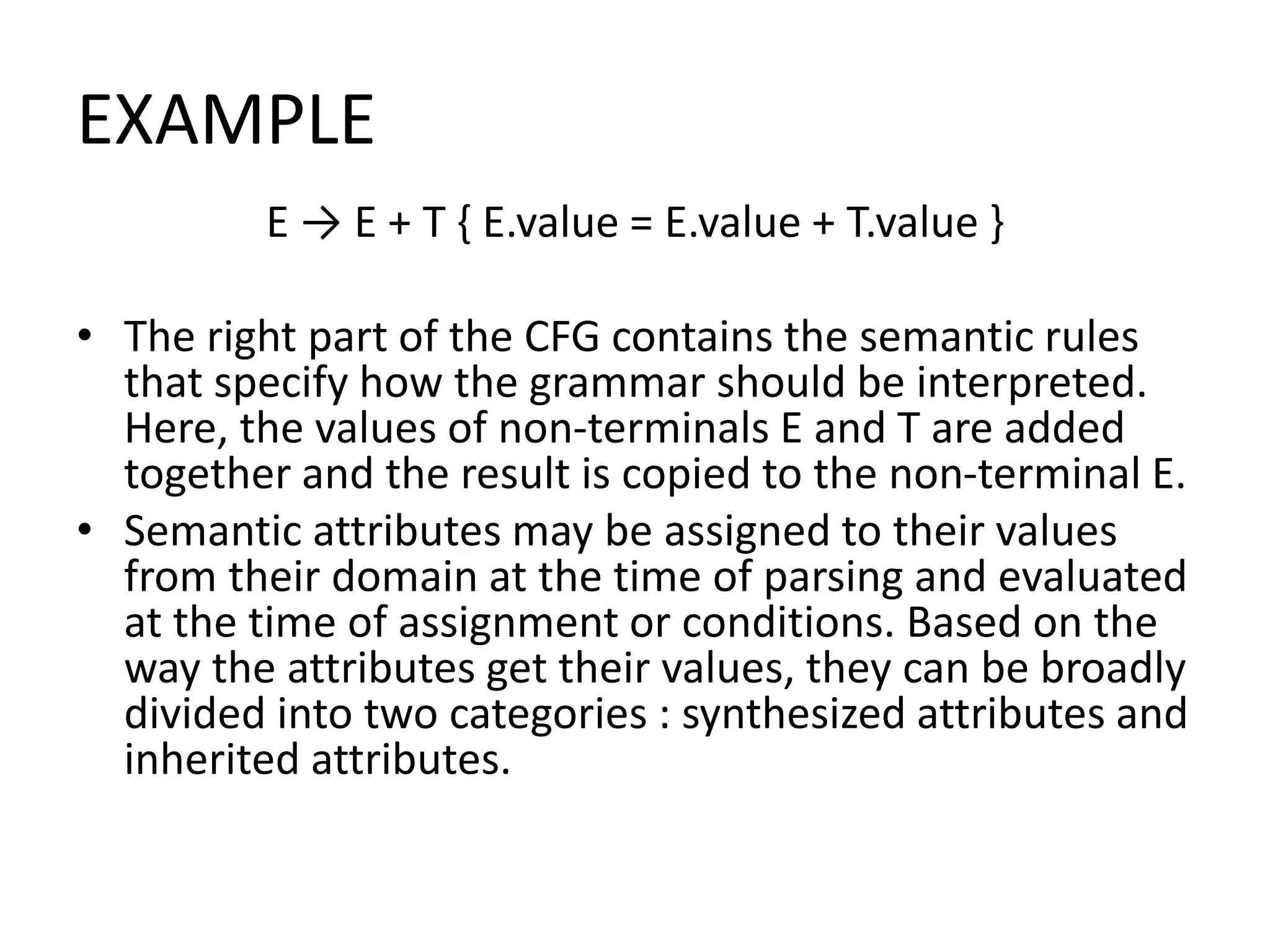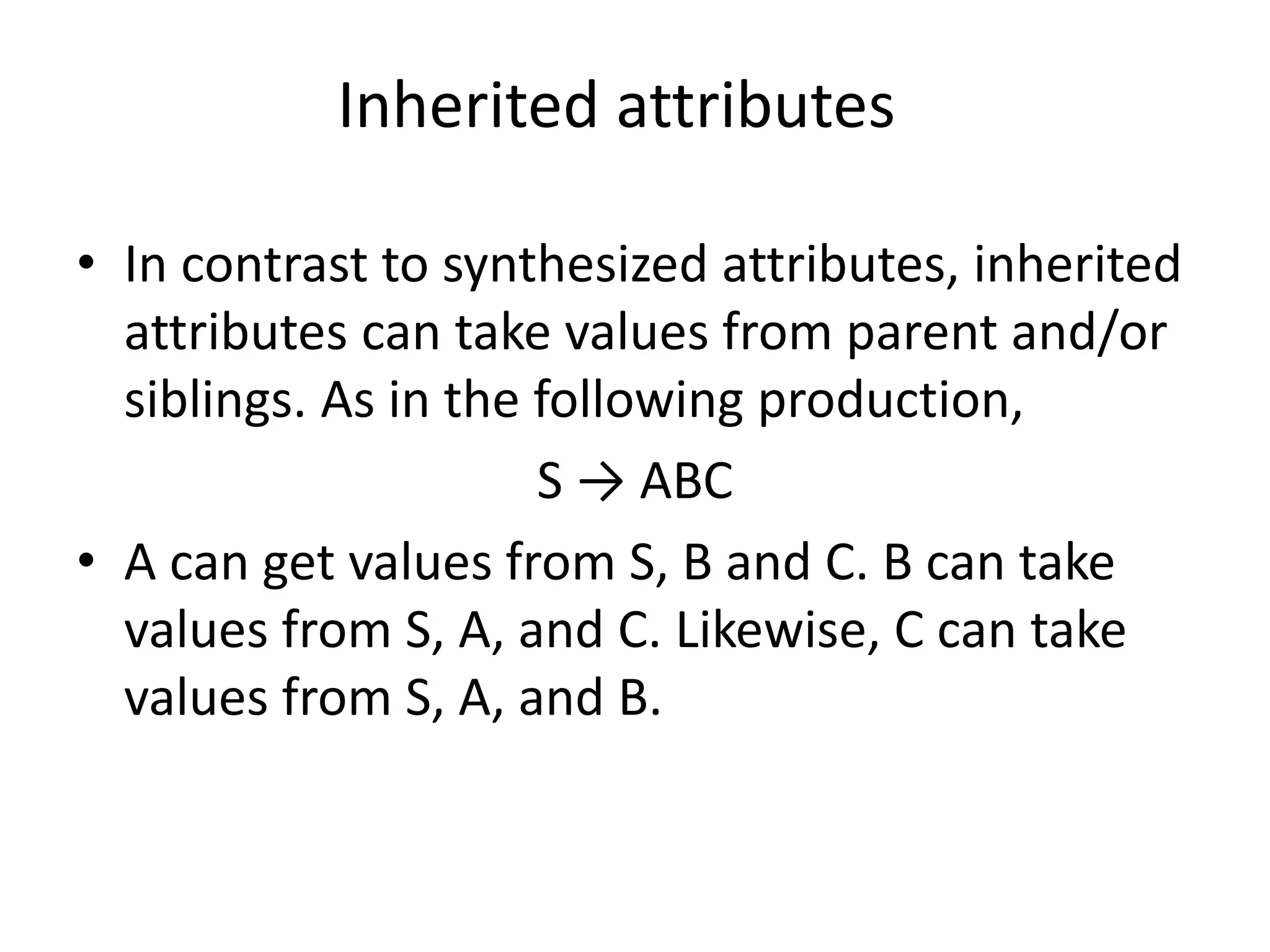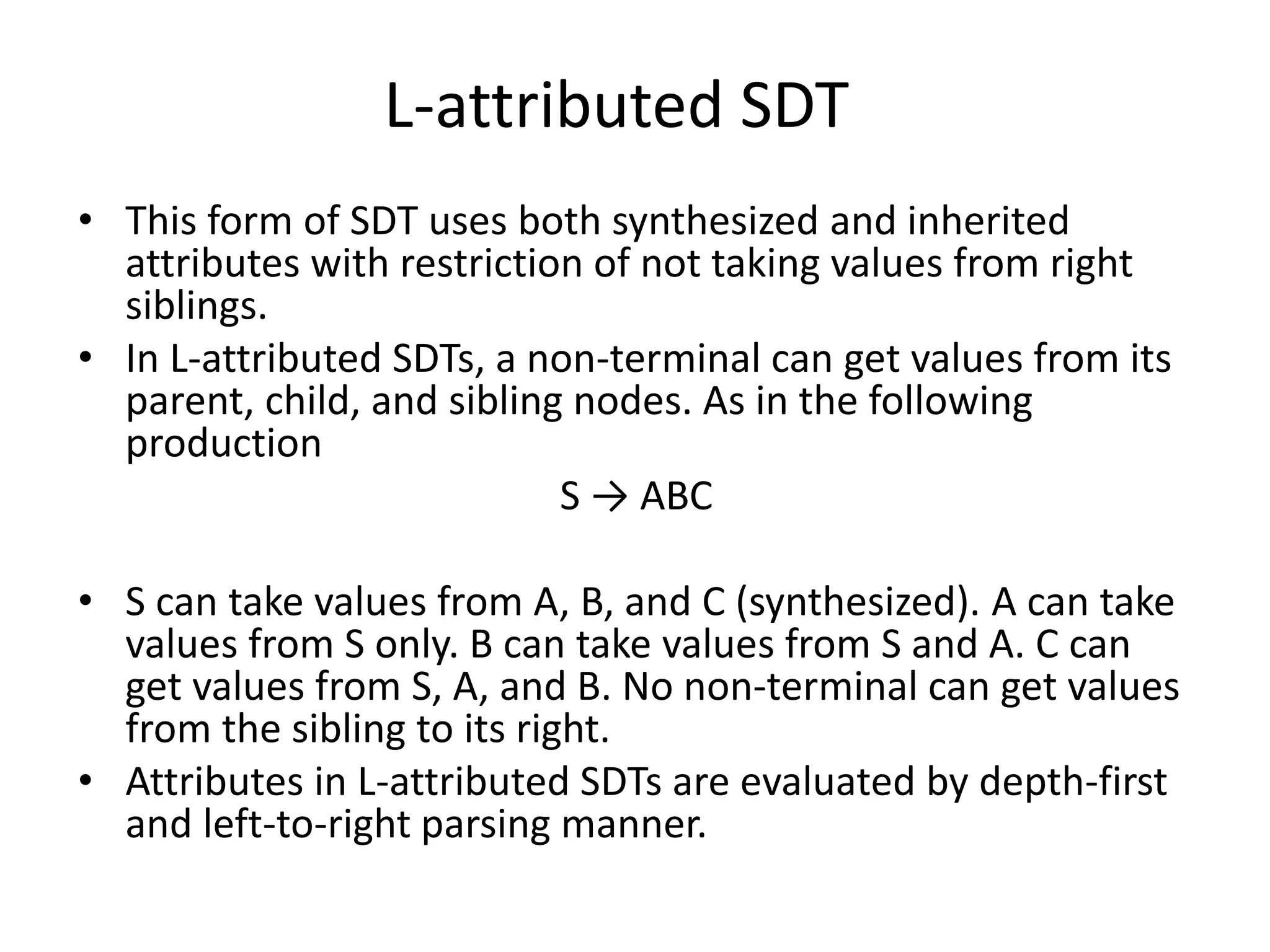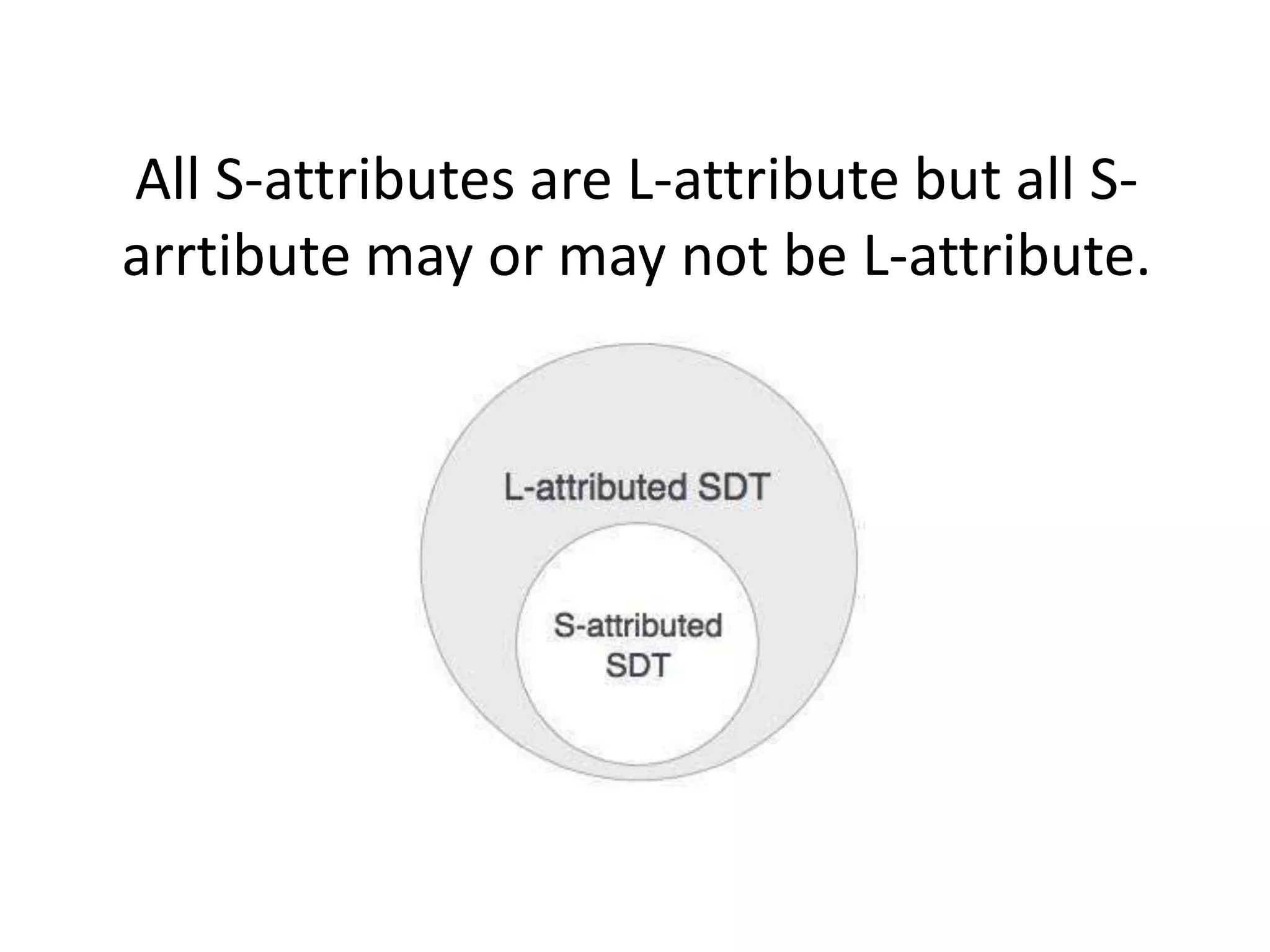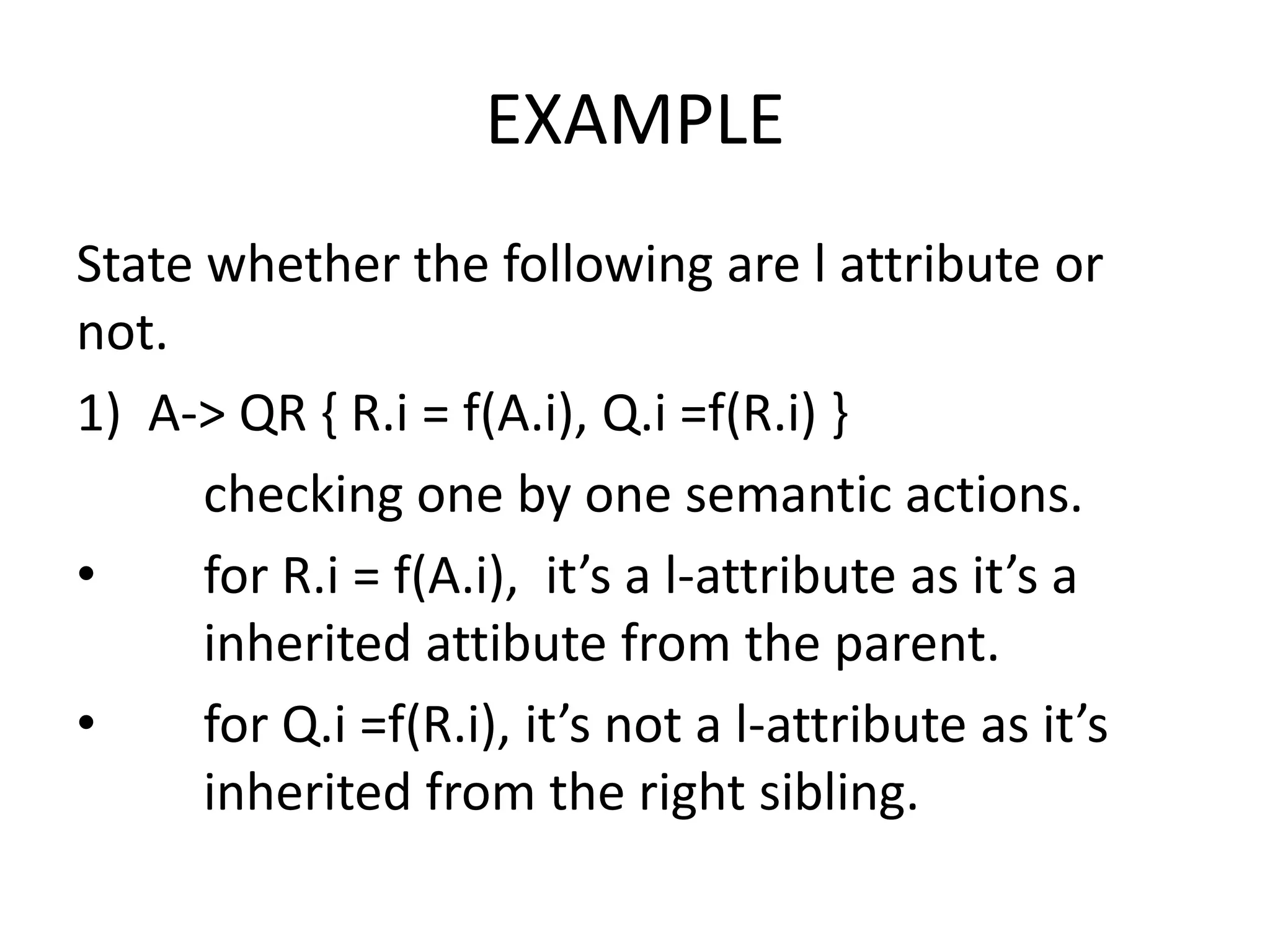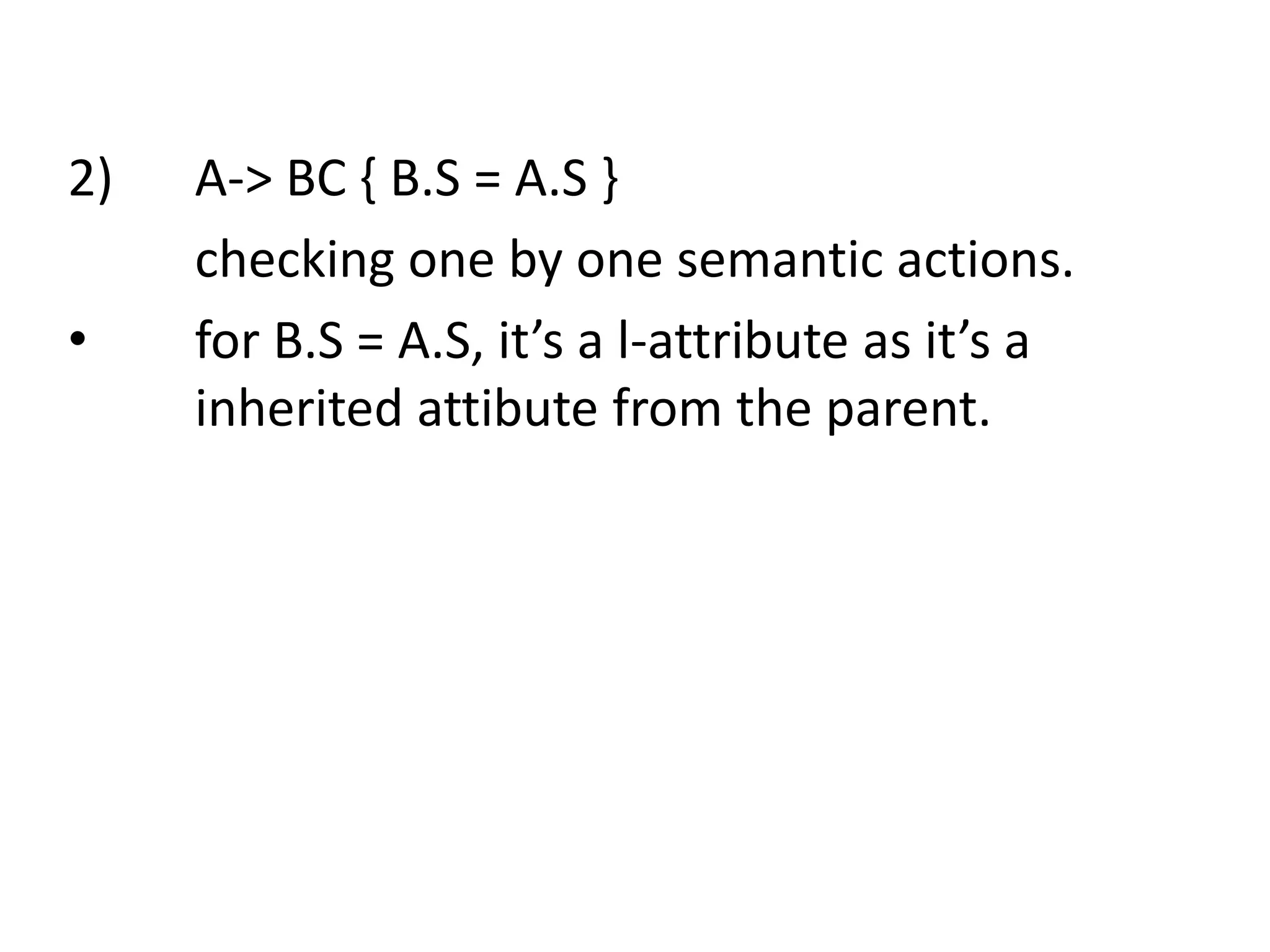The document explains attribute grammar, a context-free grammar variant that includes attributes to add context-sensitive information to non-terminals. It differentiates between synthesized attributes, which derive values from child nodes, and inherited attributes, which can acquire values from parent or sibling nodes. It also discusses L-attributed syntax-directed translation, which uses both attribute types with specific restrictions on value sourcing from sibling nodes.


